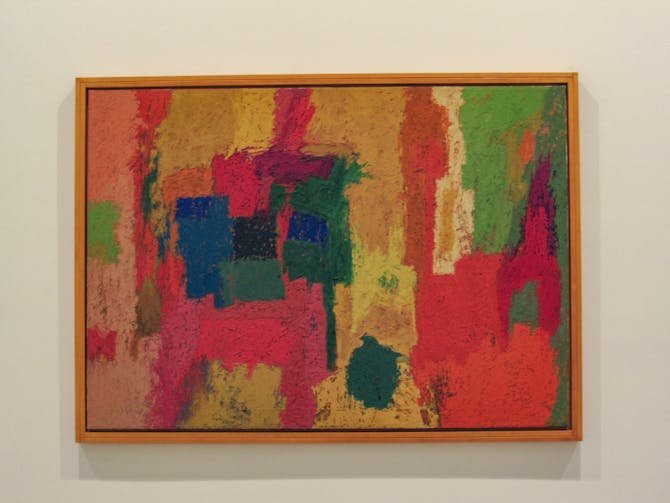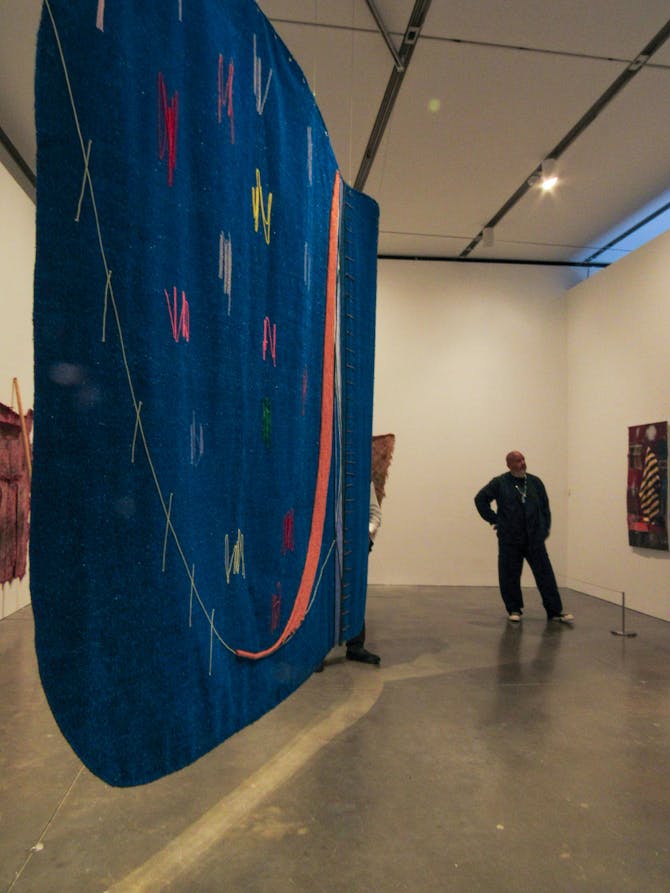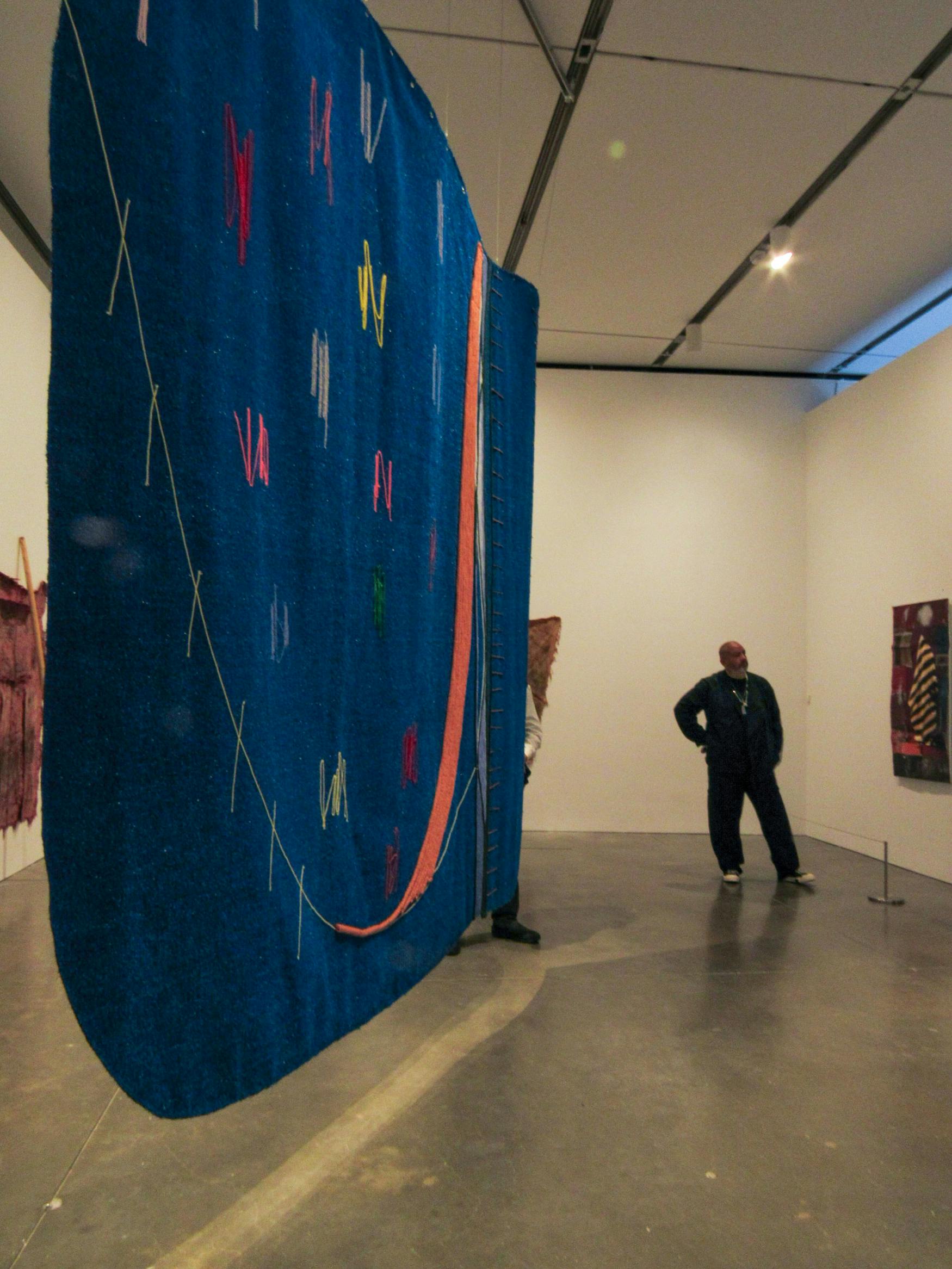Incantations of Indigeneity: "An Indigenous Present" at Boston's ICA
Departing from traditional senses of curation in response to the unique histories of Indigenous Americans, the Institute of Contemporary Art opened “An Indigenous Present” on Oct. 9 featuring site-specific works done by Indigenous contemporary artists. This exhibition is educational at its surface, tracing the history of certain pillars within contemporary Indigenous art. Curators Jeffrey Gibson and Jenelle Porter undoubtedly sought to reimagine the possibilities of curation for Indigenous art. Before diving into the experience of the exhibition, it must be noted that this article will not be similar to other exhibition reviews I have done in the past. Continuing the work that Gibson and Porter started in their unconventional yet just presentation of the genre, I aim to describe my experience within the galleries, discussing the art, the artist’s words and not relegating these artists to their origins. As the Indigenous Artist has been restricted to a Western understanding, I plan to write without consideration for comprehension. This curatorial experience may confuse, complicate and obfuscate the preconceived notions a viewer has, I can only hope to translate such an elation in the restrictive written word. I have chosen to present some works of the many that you can see at the exhibition, and I encourage you to go to the exhibition to see all of them.

George Morrison, “Untitled,” (1962), oil on canvas, Collection of Barbara Pereyma-Farrara.
In George Morrison’s “Untitled” (1962) brush hits canvas, color slowly smears, drags, contrasts, fights, embraces, to manifest an oil-slicked plane contained within cold silver metal and soft, warm wood. Stretching between themselves, lines interpenetrate one another, a field of horizontal planes from which blotches of verticality spring forward, becoming nothing less than color and shape on the track towards a human understanding of these two harmonic ideas. Morrison’s work is an immediacy filled with interrogation. Thick paint carved from itself into the canvas, becoming subject itself, paint becomes the figure, the gesture, the movement, the resolution. In the colors of paint we see not only contrast but harmonious communities of small brushstrokes positioned side by side. Continuously Morrison’s paint evolves itself, moving, shifting and responding, creating eye-catching instances which prompts the gaze to dart from one to the other. Large swaths of shifting hues adjust themselves in creating land — distant, misty and unclear. Pigments on the canvas obscure our understanding of land, yet express in themselves what Morrison was drawn to: paint itself. In this exhibition, Morrison is cited as saying, “there might be a suggestion of matter … but the phenomenon of paint was what the painting was really about.”
Standing at the crossroads of the galleries, time shifts. In one direction the past pulls in a historical ideal that the museum demands of the spectator. Another direction leads to the tradition of orality incarnate in sculpture, prose and scale. The third and fourth projects bring you further from the past into the exhibition, as intergenerational questions of art and truth become the focal point of the exhibition. Each direction is a new moment of uncertainty and curiosity.
Patched together with tape that is peeling itself off the paper, Kimowan Metchewais’s “Luther (Striped Man)” (2003) is pinned to a wall, reflected by Sonya Kelliher-Combs’s “Salmon Curl” (2023). Delicate curls of polymer and paper speak in hushed repetitions to one another. The color red repeats and reflects, reexamining itself. Red folds, curves, planes, swaths itself over reindeer hair, quills, to frame a man wrapped in stripes. Repetition, over and over, three times or sixty, these works repeat, again and again. They are individual and distinguishable, notes and tones in symphony. As they sing together across the gallery floor, each delicate story becomes an individual experience to the possibility of our understanding in collectivity. One two and three become one, all to sixty are one. Parts of a whole patched or lined, the wholeness in question as removal and addition are possible and plausible. As Metchewais’ words are presented on the exhibition wall, “the parts create a whole.” Cold dried salmon filets served in an ensemble of human patchwork, craft and textile. They are whole. In their reflection of one another, they speak to an intense symphony of varied voices becoming unified, yet individually distinguishable all the same.

Galleries 1 and 2 of An Indigenous Present in the background of which one can see Sonya Kelliher-Combs, “Salmon Curl,” (2023), Acrylic Polymer, Reindeer Hair, acid-free mylar, nylon thread and steel pins.
Stars and stripes are transformed into a musical score composed of characters exterior to classical traditions in “American Ledger No. 1,” (2018/2020) which is Raven Chacon’s individual understanding and creation of musicality. Possibilities, entrances, futures and paths, the score weaves the abstraction of sound into the material, where fabric and tissue become the literary. What the hands weave into visual, the ears process into information, the understanding of which is for those of whom the works are created. Understanding the score is intrinsic to the musician of the score. Chacon is unapologetic in her obfuscation of the sonority, understanding that the piece may not be performed, yet the blanket becomes the flag and as it burns over a bonfire “Controlled Burn” (2025) rages in the ear. Distant flags of the past become the American flag, displaced from the sound we hear as we are so far removed from the waving of the wind and flapping of fabric. Yet “American Ledger No. 1” rings in our ears, a sound installation mixed with a burning fire crackling over the soft waves of the ICA’s seaside locale.
Visit “An Indigenous Present” without expectations of the art, as each piece will challenge and confuse you. In that way, their messages may become clearer. Thank you to Gibson, Porter and Theresa Romualdez for inviting The Justice to the exhibition.

Teresa Baker “Throw It to the Ocean,” (2025), Acrylic yarn, Monterey cypress seed pods, willow, and artificial sinew on artificial turf.Behind which artist and co-curator Jeffre Gibson stands in front of Kimowan Metchewais, Ghost Dancer, 1998, Photo Paper, ink, watercolor, paint, and chalk on paper.



Please note All comments are eligible for publication in The Justice.